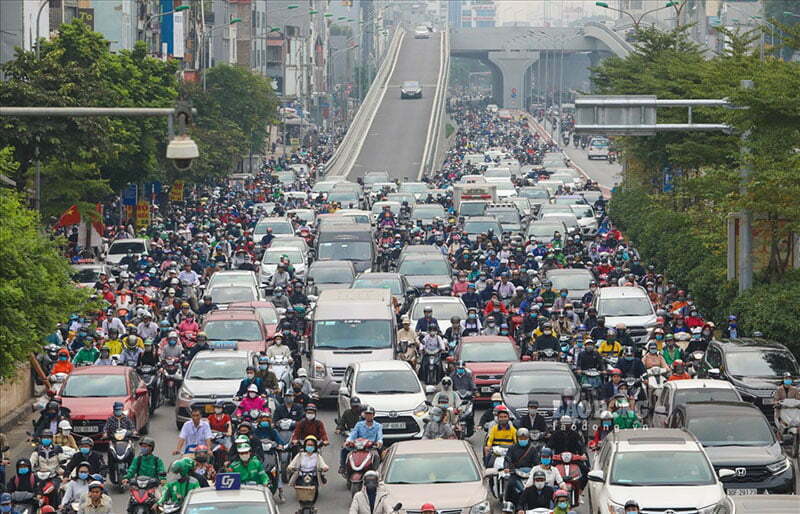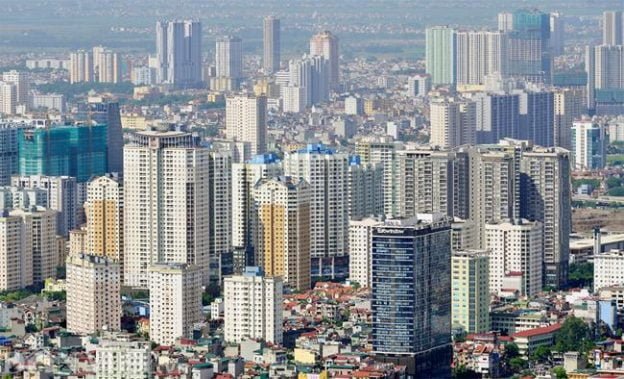Where do you imagine yourself during your retirement years?
A comfortable and exciting lifestyle surrounded by diverse landscapes and friendly people? Freedom and choices so you never get bored. Amazing food and places to visit. A new journey and adventure.
I believe Vietnam ticks all of those boxes and so many more. Do you?
Let’s have a look at what it’s like to retire in Vietnam.
Table of Contents
Why should you choose to retire in Vietnam?
There are numerous reasons why Vietnam is a wonderful country for retirees, but let’s get straight to the point.
When thinking of an ideal place to enjoy your retirement, what factors do you usually pay attention to first? The people, scenery, and cuisine are important elements to consider, right?
Vietnamese people are very friendly!
It’s no secret that Vietnamese people’s hospitality is famous worldwide. Indeed, Vietnamese people tend to consider everyone like family and are always ready to help when they see someone in trouble. Even though not everyone can speak English, you will always find smiles on their faces everywhere.
Vietnamese people are also very outgoing and friendly. They can be very comfortable sharing anything with you. If you decide to retire in Vietnam, you will be welcomed homely, yet politely, everywhere you go.
Vietnamese people are very open to foreign cultures. Young Vietnamese today can speak a variety of languages. Films, music, and other cultural products are also widely accepted. If you retire in Vietnam, you will rarely see people here showing contempt or discrimination against someone just because they are from a different culture.
However, there is of course discrimination between being a tourist and a foreigner living here. So it’s well worth learning the basics of the language to communicate with the locals easier.

What’s about the weather?
Vietnam has a mild tropical or subtropical climate and it varies from North to South, from West to East.
If you are a person who likes cold weather, then you should retire in the North of Vietnam. Despite being located in a tropical climate area, the high mountains in the North sometimes have snow in winter while temperatures drop below 0 degrees Celsius.
Going down a bit, Hanoi – the capital city will let you experience all four seasons: spring, summer, autumn, and winter in a year. The summer times usually get quite hot, the temperature can reach 35 degrees Celsius in June and July (and it is getting hotter over the years). Drizzling and sudden rains are normal during summer and autumn.
Last but not least, the most unique trace of the North East weather – the nightmare to all foreigners – is the moldy season. From February to April, the air humidity in the Northern region can be ridiculously high, up to 90%. This leads to water condensing on the surface of objects, from the glass to the floor, even in the ceiling.
And if you are not careful? All of your beloved leather clothing and wood furniture can get moldy pretty quickly. Even the house walls can get molded. Believe me, it is not fun when you find out your favorite books had mold all over them!
Central Vietnam has warm temperatures all year round. The hottest months are from June to August. However, during the summer, this region gets affected by a lot of heavy storms and floods. Occasionally, one or two typhoons from the Pacific sea will hit the mainland.
Southern Vietnam has two seasons, a dry season from November to April, and a rainy season from May to October.
Where to visit when retiring in Vietnam?
There are many world heritages recognized by UNESCO that you can visit while retiring in Vietnam:

Retire in Vietnam, what to eat?
Vietnam has a very diverse and rich cuisine. With many delicious and unique dishes, Vietnamese cuisine is a part of the national soul.
Some of the famous dishes that are a must-try when you retire in Vietnam are:

How to get around when you retire in Vietnam?
Transportation in Vietnam may not be the greatest nor the easiest to get around, but at least you have a variety of choices.

How can you apply for a retirement visa in Vietnam?
Unfortunately, Vietnam still does not have a retirement visa for foreigners who want to retire in Vietnam.
If your spouse is a Vietnamese citizen? Great! You will be eligible for a 5-years visa. If not, you can still retire in Vietnam with some other visa options such as:
Tourist visa: The tourist passport is valid for only 3 months, and is currently not available due to the COVID-19 pandemic situation.
Business visa: includes DN1 and DN2, these visas will let you stay in Vietnam up to 3 months
Investor visa: granted to foreign investors or representatives (Legal Rep) of foreign organizations investing in Vietnam, corresponding to each capital level.
Investing in an existing company or a new company is one of the common choices retirees do in Vietnam to lock down their long-term visas. This will grant you a DT4 Visa, it is valid for around 1 year and can easily be extended every year as long as the company is still operational.
You can invest from around $5000 – $30,000 into a startup or existing business depending on the evaluation of the business. If you would like to see some options for businesses for sale in Vietnam you can contact our team, and we can send you some information and discuss the process, regulations, and legal issues of investing in a business in Vietnam.
Another option is to obtain a work permit, this might not be suitable for everyone, however, some of you might want to use your experience and expertise to either consult or work part-time in a company here in Vietnam. In return, you can receive your work permit.
You can take a look at this news article to see the latest work permit rules and regulations. Keep in mind that all visa laws and policies do change regularly so if you would like to clarify anything don’t hesitate to contact us.

.
How much does it cost to retire in Vietnam?
Vietnam has relatively low living costs compared to Western countries such as Europe or North America. However, the middle class in Vietnam is emerging rapidly and some prefer a lavish lifestyle.
.Below are the average costs for basic necessities in some popular cities if you choose to retire in Vietnam.
Hanoi cost of living
Hanoi, the capital city, is the second-largest city in Vietnam and the political center of the country. Famous for its hundred-year-old architecture and rich culture with influences from Southeast Asia, China, and France. The cost of living in Hanoi is 31% less expensive compared to Bangkok, Thailand.
Ho Chi Minh City cost of living
Ho Chi Minh City is the largest city and an economic center of Vietnam. It’s located in the South and is commonly known as Saigon. Ho Chi Minh City is a modern and fast-paced city with many entertainment places. The cost of living in Ho Chi Minh City is about 10% more expensive than in Hanoi, the most expensive city in Vietnam.
Da Nang cost of living
Da Nang is the largest city in central Vietnam and one of the country’s most important ports. It is famous for beautiful beaches and a common choice for retirees. Da Nang is also located near Hoi An ancient town and the imperial capital of Hue.
These prices are only the estimate of the average cost in each city. For more references, you can check out this website. Nonetheless, Vietnam is relatively cheap and offers a wide range of services. If you choose to retire in Vietnam, you can live comfortably with a few hundred a month or spend thousands of USD on a lavish lifestyle.
Conclusion
Vietnam has a lot to offer for retirees, more and more people choose to retire in Vietnam nowadays.
Friendly people, all kinds of weather, stunning scenery, excellent cuisine, various choices of transportation, and rich culture are some of the reasons why you should retire in Vietnam.
However, Vietnam does not have a retirement visa yet, but there are many ways to get around that without much hustle.
Check these articles out if you are also interested in healthcare and where are the best places to retire in Vietnam.
.
.

